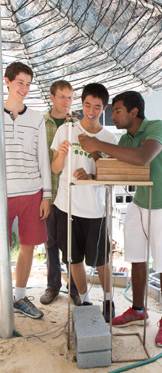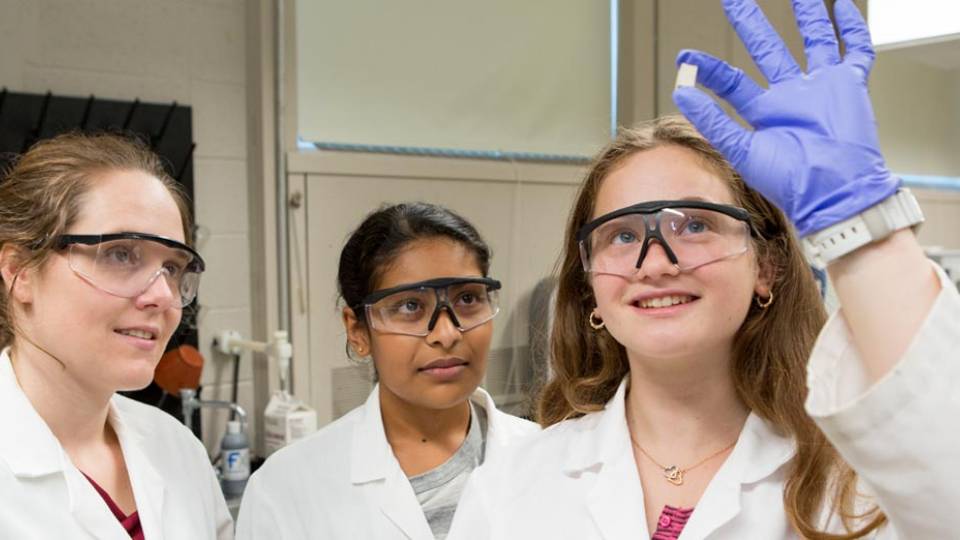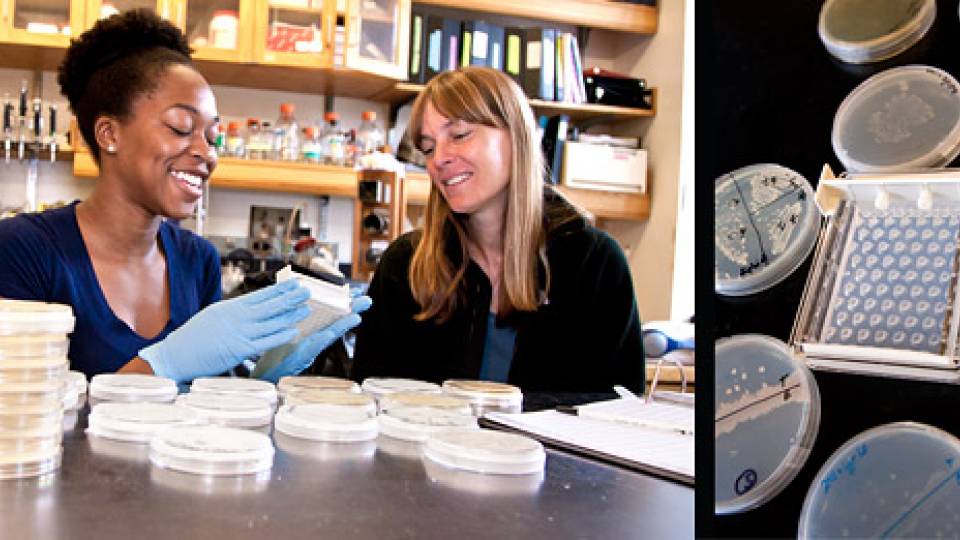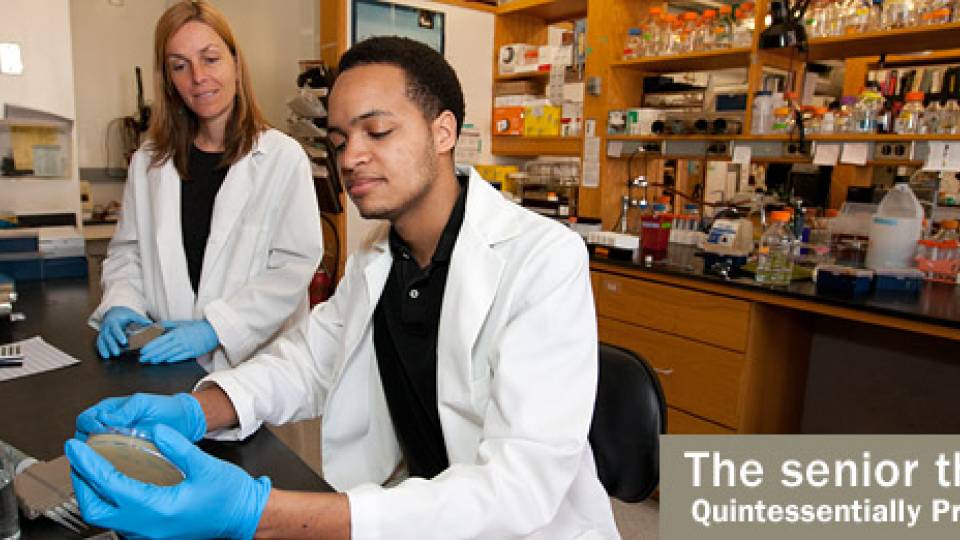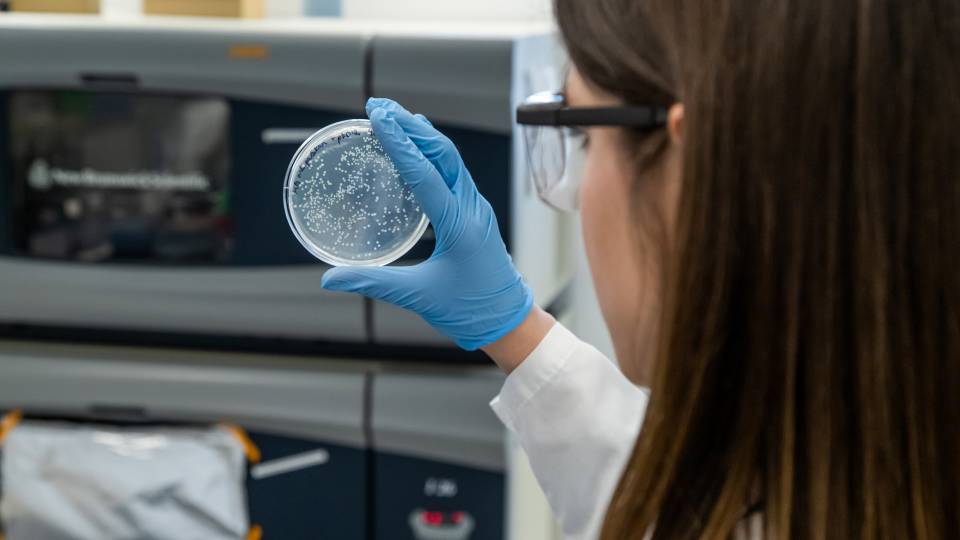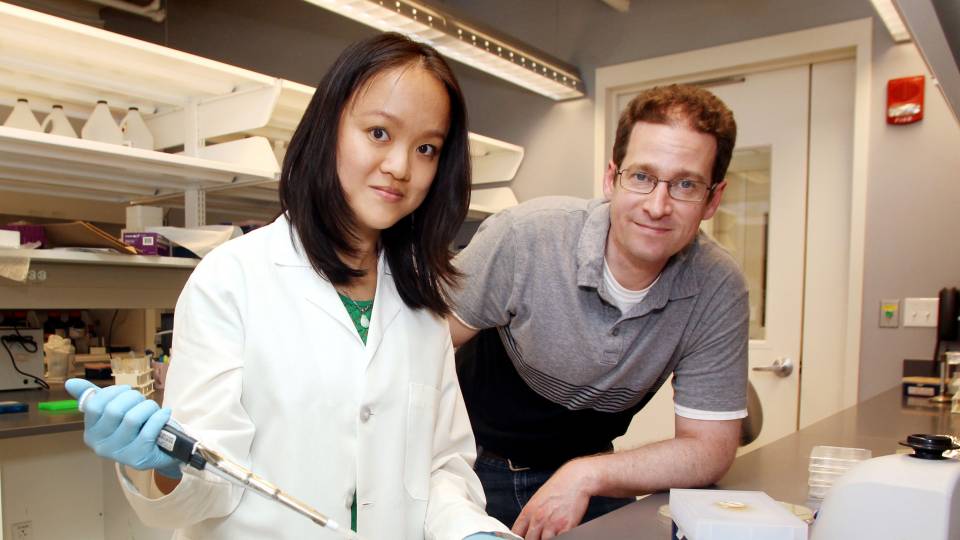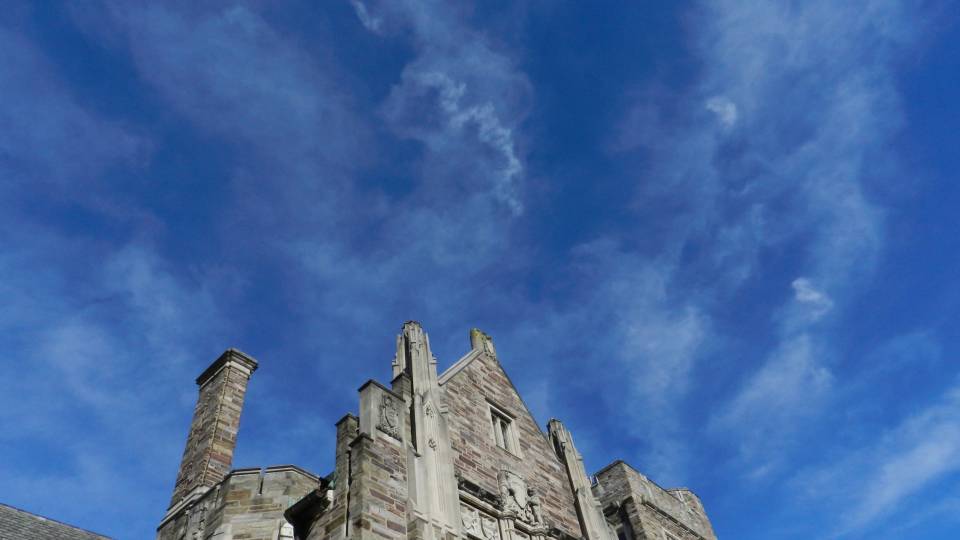On a recent balmy afternoon, three high school students kept cool beneath an unusual umbrella outside the Architectural Laboratory at Princeton University. The students had made the umbrella out of heat-reflective Mylar blankets and lined its underside with a network of skinny black pipes. Water running through the pipes cooled the surface, allowing it to absorb the heat radiated by human bodies.
"It's even better than being in the shade," said Forrest Meggers, an assistant professor of the School of Architecture and the Andlinger Center for Energy and the Environment. "This way you can make people feel more comfortable even though you're not changing the air temperature."
The students are collaborating with Meggers and his research team on designs that aim to reduce dramatically the energy required for cooling and heating. They are among 39 high school students conducting research at Princeton this summer through the University's Laboratory Learning Program.
"This gives students a chance to see what it's actually like to do research in engineering and the natural sciences — to develop problem-solving skills and to gain a deeper level of knowledge," said program administrator Karla Ewalt, associate dean for research in the Office of the Dean for Research. "Research is the experience of trying to learn something new or develop a new tool."
Nicholas Houchois, a rising senior at St. Paul's School in Concord, New Hampshire, assembled and programmed an automatic sensor for the cooling umbrella, which measures temperatures in a dome pattern at two-minute intervals throughout the day. Data from the sensor will allow him to determine how efficiently energy and water flow through the system to provide cooling.
The umbrella is a prototype meant to inform plans for a larger cooling pavilion, a collaborative project by Princeton architects and engineers. Louis Wang, a rising senior at West Windsor-Plainsboro High School North in New Jersey, is testing different types of ceramic tiles to create a "sweating wall" that is not sweaty. He is helping to develop materials with particle sizes that will allow water vapor to pass out of the interior of the pavilion but will also keep the outside of the structure from getting wet, providing the evaporative cooling of sweating without the problems of a moist surface.
"I was thrown into this ongoing project, and I had to catch up quickly," Wang said, adding that he enjoyed learning on the fly alongside graduate students and postdocs.
With Meggers as his mentor, Vihar Desu has focused his summer efforts on a sustainable solution for winter heating — geothermal wells. Desu is analyzing underground temperature data from geothermal wells throughout New Jersey to determine which depths optimize the use of geothermal energy.
"There's a huge learning curve," said Desu, a rising senior at Newark Academy in Livingston, New Jersey. "I didn't know anything about geothermal energy before I started this, so I’ve been learning as I go."
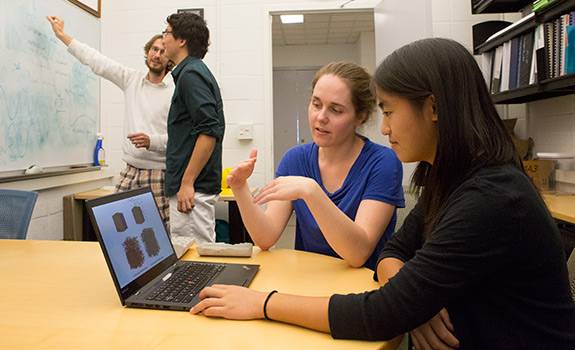
Claire White (center), an assistant professor of civil and environmental engineering and the Andlinger Center for Energy and the Environment, discusses using computer simulations to understand chemical reactions with high school student Angela Mao. Shown at the whiteboard are postdoctoral researcher Antoine Morandeau and high school student Kevin Shen.
Students Angela Mao and Kevin Shen are studying innovative building strategies on a smaller scale. With the guidance of Assistant Professor Claire White, they are using computer simulations to understand the chemical reactions involved in making cement from unconventional sources. Cement sources such as metakaolin, produced from a mineral found in certain types of clay, generate far lower carbon dioxide emissions than traditional limestone-based cements. Analyzing the fine-scale chemical and physical properties of these new cements is crucial to assessing their durability.
The project is Shen's first experience with computer programming and engineering research. "This gave me an idea of what the research life is actually like," said Shen, a rising senior at Montgomery High School in New Jersey. "I thought it would be really easy to just run a calculation. But there are a lot of different decisions you have to make."
"I was surprised that research is such a long process. You can't just start it, go in one direction and get to your end destination," added Mao, a rising senior at West Windsor-Plainsboro High School South. "You don't really know where you'll end up, and that's what makes it fun."
White thinks this early exposure to the field of engineering can be particularly valuable. "Having an opportunity to get research experience is a great way for students to make decisions about their future careers," said White, an assistant professor of civil and environmental engineering and the Andlinger Center for Energy and the Environment. "For me, this is a natural way to interact with the younger generation and push them to see what they can achieve."
While some students are exploring new building approaches that could reduce environmental impacts, others are conducting research with potential applications to human health. Nikita Kedia is investigating ways to combat persistent bacterial infections in the laboratory of Mark Brynildsen, an assistant professor of chemical and biological engineering.
Kedia is testing strains of E. coli bacteria that are missing various proteases — enzymes that break apart proteins. Deleting proteases can alter the metabolism of the bacteria, which might make them more susceptible to certain antibiotics, such as gentamicin. Kedia's project involves determining which carbon sources the different protease deletion strains can use for energy while in the persistent state. Her results could inform strategies to "awaken" the dormant bacterial cells that cause recurrent infections, and thus kill them more effectively with antibiotics.
Kedia, a rising senior at Hillsborough High School in New Jersey, says her summer experience has solidified her choice to pursue a career in science. "I know that when I go to college I want to major in biomedical engineering, so this is definitely helpful in giving me more perspective," she said.
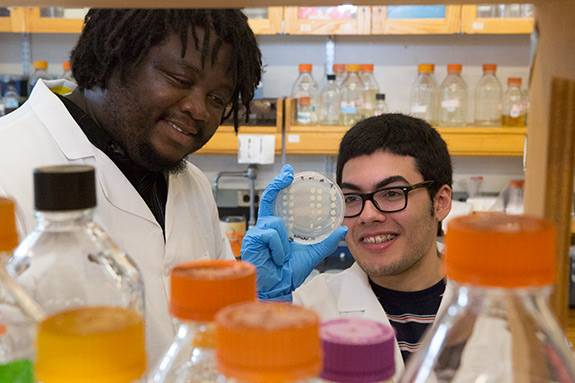
Working in the lab of senior lecturer in molecular biology Alison Gammie, high school student Raul Rodriguez (right), guided by graduate student Leslie Alexis (left), is creating and testing specific gene mutations using yeast cells. "This was a good opportunity to get my feet wet in the research field," Rodriguez said. "It has definitely furthered my interest in science."
In Alison Gammie's molecular biology laboratory, Raul Rodriguez is learning to use yeast cells as a model system to understand a different type of disease. Xeroderma pigmentosum is a genetic disorder caused by mutations in a gene that is required to recognize DNA damage induced by ultraviolet light. People with the disease are highly susceptible to skin cancers and suffer from neurological problems.
The DNA repair process is simpler to study in yeast cells than in human cells. "You can just zap the cells with UV light, and if the repair system isn't functional, they die. It's a simple but powerful assay," said Alison Gammie, a senior lecturer in molecular biology.
Along with graduate student Leslie Alexis, Rodriguez is creating and testing specific gene mutations to better understand the natural recognition mechanism for DNA damage. His results may explain how the protein encoded by one gene is able to recognize damage caused by two different sources — UV light and cisplatin, a chemotherapy drug.
"I've always been interested in biology, but our curriculum at school only goes so far," said Rodriguez, a rising senior at Humanities Preparatory Academy in New York City. For Rodriguez, learning about the tools and techniques used to manipulate DNA in the laboratory has been especially valuable. "This was a good opportunity to get my feet wet in the research field," he said. "It has definitely furthered my interest in science."
